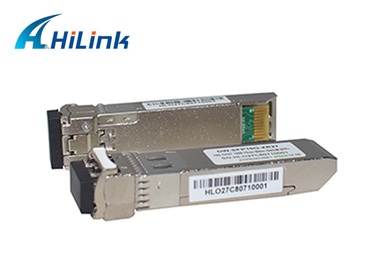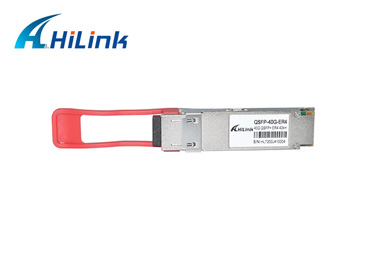Difference Between QSFP, QSFP+, QSFP28
Aug. 17, 2022
SFP stands for Small Form Factor. It refers to a fiber optic transceiver that supports 1Gbps data rates. In addition to SFP, the market is currently filled with various types of fibre optic transceivers such as QSFP, QSFP +, and QSFP 28. At first glance, these transceiver modules look very similar. In reality, however, there are significant differences between them. Being aware of the differences is a good way to make the right choice for your network connection. So what is the difference between QSFP, QSFP +, and QSFP28?
QSFP vs QSFP+
“Q” of QSFP means quad (4 channels). QSFP is a compact, hot-pluggable transceiver used for data communications. The QSFP specification supports Ethernet, Fibre Channel, InfiniBand, and SONET/SDH standards with different data rate options. QSFP transceivers support the network link over a single-mode or multimode fibre patch cable. QSFP modules are commonly available in several different types: 4x1G QSFP, 4x10G QSFP+, 4x28G QSFP28. From this side, QSFP vs QSFP+ vs QSFP28 all shares the same small form factor. literally, QSFP uses 4x1G lanes and was only found in some FC/IB contexts.
10G QSFP+
While QSFP+ transceivers, evolving from 4x1G lanes (QSFP) to 4x10G lanes, are designed to support 40G Ethernet, Serial Attached SCSI, QDR (40G) and FDR (56G) Infiniband, and other communications standards. QSFP+ standard is the SFF-8436 document which specifies a transceiver mechanical form-factor with latching mechanism, host-board electrical-edge connector, and cage. QSFP+ modules integrate 4 transmit and 4 receive channels plus sideband signals. Then QSFP+ modules can break out into 4x10G lanes. QSFP+ modules are used to connect switches, routers, Host Bus Adapters (HBAs), enterprise data centers, high-performance computing (HPC), and storage. But some may think QSFP is the same as QSFP+, especially in the Ethernet world.
QSFP+ vs QSFP28
QSFP+ and QSFP28 differ in “28” as the name says. QSFP28 is a hot-pluggable transceiver module designed for a 100G data rate. QSFP28 integrates 4 transmit and 4 receiver channels. “28” means each lane carries up to 28G data rate. QSFP28 can do a 4x25G breakout connection, 2x50G breakout, or 1x100G depending on the transceiver used. While QSFP+ supports the data rate of 40G, 4 channels for transmitting, and 4 channels for receiving, each lane carrying 10G. QSFP+ can break out into 4x10G or 1x40G connection.
100G 40KM QSFP28 ER4
Usually, QSFP28 modules can’t break out into 10G links. But it’s another case to insert a QSFP28 module into a QSFP+ port if switches support it. In this situation, a QSFP28 can break out into 4x10G like a QSFP+ transceiver module. One thing to note is that you can’t put a QSFP+ transceiver into a QSFP28 port to avoid destroying your optics.
Conclusion
The difference between QSFP vs QSFP+ vs QSFP28 has been stated clearly in this article. Though QSFP is thought of as QSFP+, when talking about 40G, actually we mean QSFP+. QSFP+ vs QSFP28 mainly differs in data rate and breakout connection. So you must be sure what you need is 40G QSFP+ or 100G QSFP28 for high-density applications, especially when connecting with 10G SFP+.
As an SFP manufacturer, Hilink (HAILI) Technology Co., Ltd. founded in 2007, is specialized in fiber optical products and networking solutions. Our main products are transceiver modules such as QSFP, QSFP28, CWDM/ DWDM SFP/XFP. Our networking solutions are including FWDM, DWDM CWDM OLP, MPO AAWG, etc. In order to provide better service for our customers, we also supply other kinds of related fiber optical products. Our products and solutions are largely applied in cloud computing, data center, networking access, and so on. Let us help you find the best optical transceivers for your needs. Contact us today or visit our website to learn more about optical transceivers.














